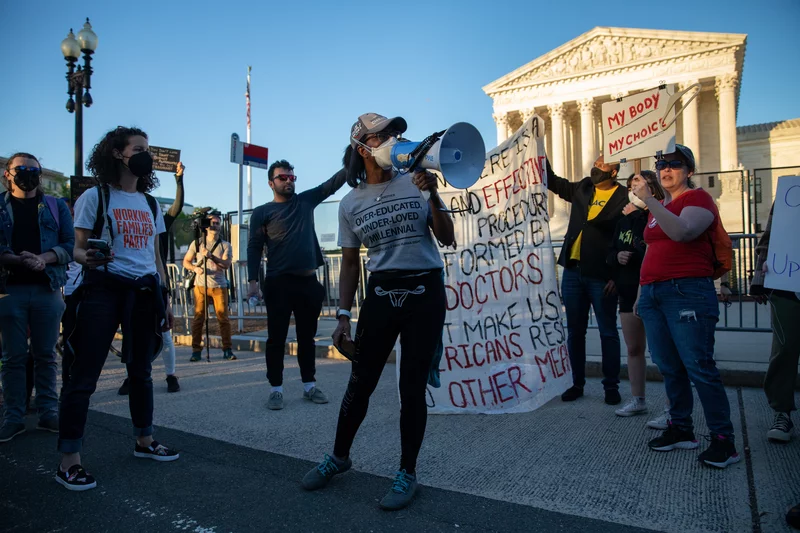By Erin Cox Feb. 10, 2020 at 9:30 p.m. EST
More than 155 years after abolishing slavery, Maryland is granting one of the government’s highest honors to the state’s most famed black abolitionists.
In the Old House Chambers of the State House — the same room where Maryland adopted a new constitution banning slavery in November 1864 — archivists have installed life-size bronze statues of Frederick Douglass and Harriet Tubman, depicted as they would have appeared the day human bondage became illegal in Maryland.
The statues were publicly unveiled during a ceremony Monday evening, part of a slow but sustained effort to incorporate overlooked contributions of black Marylanders into the State House grounds. At the same time, Maryland has begun to remove commemorations some view as supportive of the Confederacy.
“A mark of true greatness is shining light on a system of oppression and having the courage to change it,” said House Speaker Adrienne A. Jones (D-Baltimore County). “The statues are a reminder that our laws aren’t always right or just. But there’s always room for improvement.”
Before the unveiling, the sounds of a choir performing spirituals a cappella bounced off the marble walls of the rotunda, which was filled with lawmakers, members of black fraternities and sororities, and the descendants of Tubman and Douglass.
It is unlikely Tubman and Douglass, both born into slavery in Maryland, would have been allowed to cross the threshold in the room where they are now depicted as witnesses to history, said Deputy State Archivist Elaine Rice Bachmann.
But Bachmann said historians did not want them on pedestals. Instead, the Douglass and Tubman statues stand in the public viewing area, eye to eye with visitors, as if they had just watched slavery be abolished in person.
“We’re creating something imagined,” she said. “You see them more as human beings. People will interact with them. They can touch them, pose for a picture with them. It’s a different experience. It’s a more emotional experience.”AD
Just one other historical figure is depicted in a similar manner inside the capital: George Washington, who was sculpted delivering his 1783 speech resigning his military commission at the State House, which briefly served as the seat of federal government. The same Brooklyn-based company made all three statues.


The Tubman and Douglass statues were proposed in 2016, partly as a way to mollify opponents of a prominent 145-year-old statue honoring Roger B. Taney. Taney, a former Maryland senator and attorney general, was a defender of slavery. As U.S. chief justice, he wrote the infamous Dred Scott decision that denied citizenship to black people.
For years, activists unsuccessfully agitated to have his statue removed from its prominent perch at the foot of the State House. The efforts reached a tipping point in 2017, when a woman was killed after a rally of white nationalists supporting Confederate monuments in Charlottesville.AD
Maryland Gov. Larry Hogan (R) joined the growing chorus of public officials calling for the Taney statue to be taken down, and it was removed in the middle of the night.
“We can’t wipe out all of our history, nor should we try to,” the governor said at the time. “But when it reaches the point where some of these symbols, whether they have historical significance or not, when they become a focal point for racism and violence, then it’s time to do something about it.”
Douglass, who was born a slave and taught himself to read and write, became one of the most influential orators, writers and thinkers of his time. His 1845 autobiography became an inspiration to the abolitionist movement.
Bachmann said Douglass visited the Maryland State House in 1874, and — pacing beneath a portrait of Washington resigning his commission — recited the entire speech aloud.AD
Tubman escaped slavery on Maryland’s Eastern Shore and led hundreds of others to freedom through the Underground Railroad and her work as a Union spy.
In recent years, Maryland has began to more prominently embrace her contributions, opening in 2017 a $22 million visitor center near the Blackwater National Wildlife Refuge, which is on land where Tubman was born and lived.
The State House serves as Maryland’s seat of government and a museum to its history. Yet in a state where a third of the population is African American, the building’s monuments did not honor a black person until 1961, when a plaque was erected in memory of explorer Matthew Henson, who co-discovered the North Pole in 1909.
Last month, Senate President Bill Ferguson (D-Baltimore City) ordered the first portrait of a black person placed inside a legislative chamber. The painting of Verda Welcome, who in 1962 became the country’s first black woman elected to a state senate, replaced one of a white governor who had been on the wall for 115 years.AD
The building still hosts some controversial historical elements. Outside the chamber where the Tubman and Douglass statues now stand, a large portrait of a Lord of Baltimore hangs above the doorway, with a young slave boy at his side. Along the wall, a 1964 plaque commemorates the 100th anniversary of the Civil War, paying homage to the sacrifice of people on both sides of the conflict.
Jones said she noticed the plaque for the first time in May, a month after she became the first woman and first black person elected to head either legislative chamber. She viewed it as “an affront to people of color” and appealed to the State House Trust, which manages the building, to take it down.
The plaque “sympathizes with Confederate motivations and memorializes Confederate soldiers,” Jones wrote. “History clearly tells us that there was a right and a wrong side of the Civil War.”AD
The state instead spent $2,500 to replace the image of the Confederate battle flag with the Maryland flag. The language honoring the sacrifices of Confederate and Union soldiers remained.
On Monday, the plaque was draped with a black cloth for the ceremonial installation of the Tubman and Douglass statues, at Jones’s request.
The statues will be open to the public when the State House is open. On Saturday, the Maryland State Archives has scheduled programming from 10 a.m. until 3 p.m. to celebrate them. Ken Morris Jr., a great-great-great-grandson of Douglass, will be there, along with scholars and historical interpreters.
Ovetta Wiggins contributed to this report.




